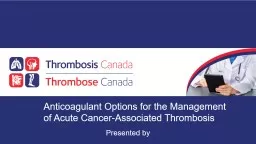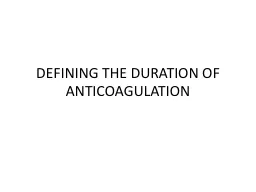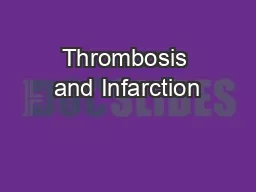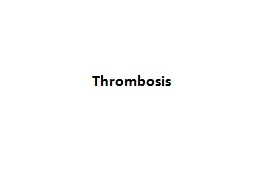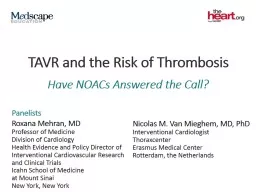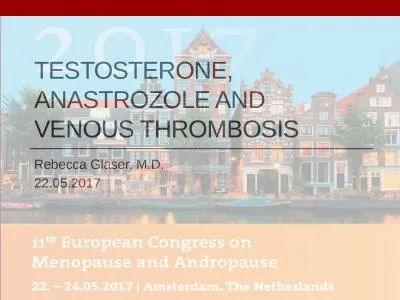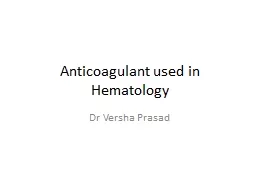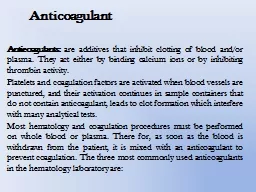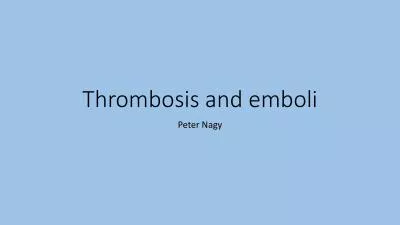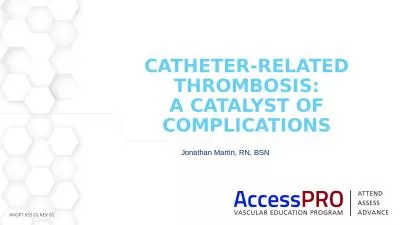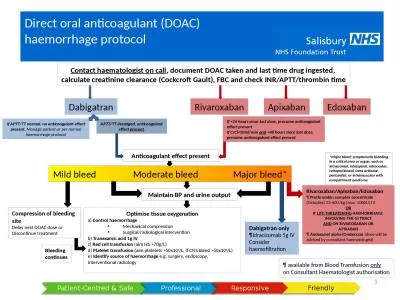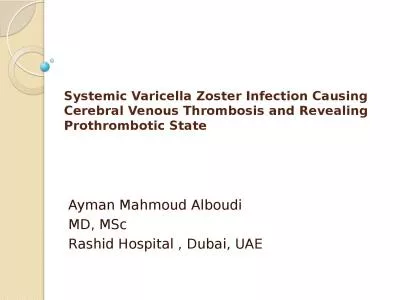PPT-Anticoagulant Options for the Management of Acute Cancer-Associated Thrombosis
Author : collectmcdonalds | Published Date : 2020-11-06
Presented by FacultyPresenter Disclosure Faculty Relationships with commercial interests Disclosure of Commercial Support This program has received financial support
Presentation Embed Code
Download Presentation
Download Presentation The PPT/PDF document "Anticoagulant Options for the Management..." is the property of its rightful owner. Permission is granted to download and print the materials on this website for personal, non-commercial use only, and to display it on your personal computer provided you do not modify the materials and that you retain all copyright notices contained in the materials. By downloading content from our website, you accept the terms of this agreement.
Anticoagulant Options for the Management of Acute Cancer-Associated Thrombosis: Transcript
Download Rules Of Document
"Anticoagulant Options for the Management of Acute Cancer-Associated Thrombosis"The content belongs to its owner. You may download and print it for personal use, without modification, and keep all copyright notices. By downloading, you agree to these terms.
Related Documents

